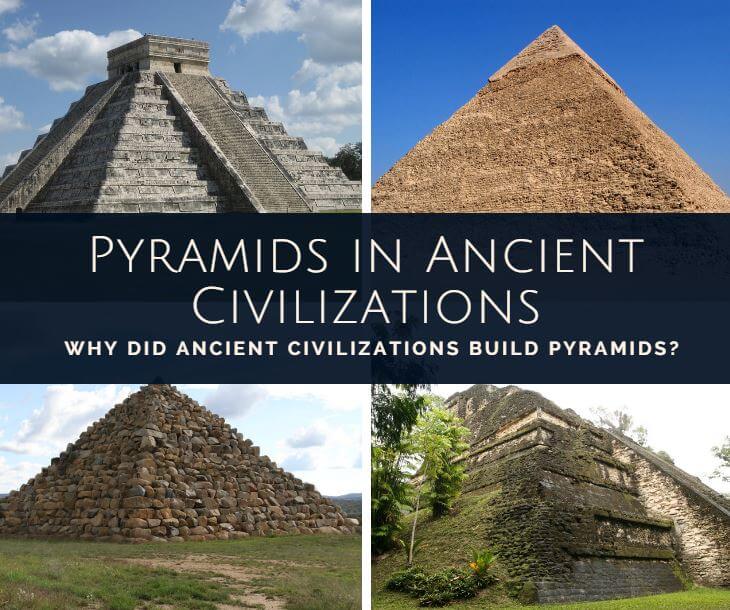
The Origin and Significance of Pyramids
Historical Background of Pyramid Construction
The construction of pyramids dates back to ancient civilizations, with the most famous examples arising in Egypt. Historians believe the first pyramid, the Step Pyramid of Djoser, was built around 2650 BCE. This architectural wonder evolved significantly, showcasing the remarkable ingenuity and skill of ancient builders.
Key points to consider:
- Timeframes: Construction spanned thousands of years.
- Cultural Influences: Egyptian beliefs heavily influenced pyramid designs and methods.
- Materials Used: Lime stone, granite, and brick were staples in the building process.
Purpose and Symbolism of Pyramids
Pyramids served more than just architectural purposes; they were tangible symbols of power and the afterlife.
- Tomb Structures: Many pyramids were designed as grand tombs for pharaohs.
- Spiritual Significance: Represented a stairway to the gods, showcasing their belief in the afterlife.
- Cultural Identity: Pyramids are emblematic of ancient Egyptian civilization and its achievements.
This blend of function and symbolism reveals much about the values and beliefs held by those who built them.
Types of Pyramids Around the World
Egyptian Pyramids: Giza, Saqqara, and Dahshur
Egyptian pyramids remain the most iconic, notably the Great Pyramid of Giza, built around 2580 BCE. Saqqara features the Step Pyramid of Djoser, recognized as the first limestone pyramid, showcasing advanced architectural techniques. Dahshur is home to the Bent Pyramid, displaying an unusual angle that reflects evolving construction methods.
- Great Pyramid of Giza: The largest and oldest.
- Step Pyramid of Djoser: A revolutionary design.
- Bent Pyramid: An architectural anomaly.
Mesoamerican Pyramids: Chichen Itza, Teotihuacan, and Tikal
Shifting to Mesoamerica, pyramids like those in Chichen Itza illustrate unique cultural beliefs. The Temple of Kukulcán, with its 365 steps, symbolizes the calendar year, while the Pyramid of the Sun in Teotihuacan is one of the largest structures in the region, representing the central role of sun worship. Tikal’s Temple I offers breathtaking views of the rainforest that surrounds it.
- Chichen Itza: Calendar significance.
- Teotihuacan: Monumental scale.
- Tikal: Breathtaking natural backdrop.
Nubian Pyramids: El Kurru, Nuri, and Meroe
In Nubia, pyramids take on a different style. The pyramids at El Kurru serve as royal tombs for the kings of Kush, while the Nuri pyramids were built to honor royal families. Meroe, on the other hand, stands out with its unique, steeply angled designs.
- El Kurru: Royal lineage site.
- Nuri: Sacred burial grounds.
- Meroe: Distinctive architectural style.
These diverse pyramidal structures highlight the rich and varied tapestry of human creativity and spiritual expression across different civilizations.
Architectural and Engineering Marvels
Construction Techniques and Materials
The construction of pyramids showcases remarkable engineering techniques that continue to astound modern architects. Ancient builders employed ingenious methods, such as:
- Lever Systems: Used to lift heavy stones.
- Ramps: Gradually inclined surfaces facilitated the movement of massive limestone blocks.
- Precision Tools: Copper chisels and stone hammers were essential for detailed work.
These approaches illustrate the profound understanding of mechanics and resourcefulness of ancient civilizations.
Alignment with Astronomical Phenomena
Interestingly, many pyramids were meticulously aligned with astronomical phenomena. For instance, the Great Pyramid of Giza aligns almost perfectly with true north. This alignment was not merely aesthetic; it also held spiritual significance, connecting the structure to celestial movements and the afterlife.
- Solstice Events: Some pyramids were designed to align with the sun during solstices and equinoxes.
- Star Alignments: Egyptians often oriented pyramid entrances towards significant stars.
These architectural and celestial synchronicities reveal a sophisticated interplay between engineering and cosmology, reflecting how deeply interconnected ancient societies were with their environment.
Mysteries and Discoveries Surrounding Pyramids
Theories on Construction Methods
The construction of pyramids has sparked countless theories, capturing imaginations for centuries. Scholars and enthusiasts alike have proposed various methods to explain how these colossal structures were built.
- Workforce Estimates: Some estimates suggest thousands of workers collaborated, ensuring efficient labor allocation.
- Quarry Techniques: Ideas range from transporting stones via sledges to using lubrication methods, like water, to reduce friction.
Despite ongoing research, the exact methods remain elusive, leaving a sense of wonder around these ancient feats.
Pyramids and Cosmic Connections
Beyond construction, pyramids are often linked to cosmic phenomena, reflecting an ancient understanding of the universe. For instance, the orientation of the pyramids to the stars, particularly Orion, might indicate a connection to the afterlife.
- Astronomical Significance: The alignment with celestial bodies provides insight into their beliefs about life and death.
- Cultural References: The pyramids were viewed as conduits for the soul’s journey, emphasizing their spiritual importance.
These cosmic relationships invite contemplation about humanity’s connection to the universe, enhancing the mystique of these architectural icons.
Legacy of Pyramids in Modern Society
Influence on Architecture and Design
The pyramid’s distinctive shape continues to inspire modern architecture and design. Structures like the Louvre Pyramid in Paris exemplify how ancient design principles can be adapted. The geometric forms resonate with a sense of stability and grandeur, making them timeless.
- Modern Interpretations: Architects often incorporate triangular shapes in contemporary buildings.
- Symbolism of Stability: Pyramids convey strength and permanence, traits sought in modern architecture.
This architectural influence underscores the pyramids’ lasting impact on design ideals.
Tourism and Conservation Efforts
Today, pyramids attract millions of tourists, contributing significantly to local economies. Iconic sites like Giza are celebrated for their historical significance, while concerted conservation efforts aim to preserve these wonders for future generations.
- Cultural Heritage Programs: Initiatives promote awareness and protection of pyramid sites.
- Sustainable Tourism Practices: Balancing visitor access with preservation is a growing focus.
These efforts not only ensure the survival of these historical treasures but also foster a deeper appreciation for ancient civilizations and their contributions to humanity.
Conclusion: Pyramids as Testaments to Ancient Civilization and Human Ingenuity
The enduring legacy of pyramids serves as a testament to the remarkable achievements of ancient civilizations and their profound ingenuity. Throughout history, these monumental structures have not only demonstrated architectural prowess but have also reflected deep cultural beliefs and astronomical understanding.
- Cultural Impact: Pyramids symbolize the values and aspirations of those who built them.
- Enduring Fascination: Their mysteries continue to captivate the imagination, urging us to explore the past.
In essence, pyramids remind us of humanity’s capacity for creativity, innovation, and connection to the cosmos, ensuring that their story will resonate for generations to come.
